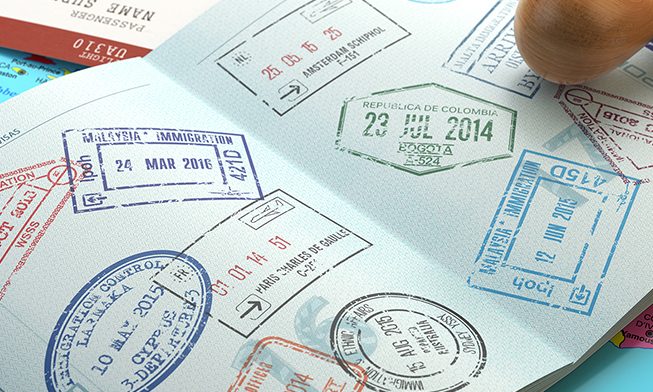Form I-944 is a relatively new form used by United States Citizenship and Immigration Services to determine whether an applicant is inadmissible based on the public charge ground. The Form I944 is required for all employment and family based applications. According to Immigration and National Act (INA) section 212, a foreign national is considered inadmissible on public health grounds if he or she is more likely in the future to receive public benefits for more than 12 months within any 36-month period.
Adjustment of status applicants who are subject to public charge ground of inadmissibility must file Form I-944, Declaration of Sufficiency, along with Form I-485.
Required Documents for Form I-944
Form I-944 is somewhat voluminous with various sections requiring detailed information about you and members of your household. The following are the requirements for completing the form:
1. Proof of Household Income
This section of the form requires you to provide information on your household income. Required supporting documents for this include:
– IRS Transcripts of household members for the most recent tax returns
– IRS Transcripts of federal income tax returns for the last 3 years
– W-2s for the last 3 years
– Social Security Statement (if applicable)
– Pay stubs
2. Proof of Household Assets
Applicants whose gross household income is less than 125% of the HHS Poverty Guidelines may use assets held either in the United States or abroad. Examples include documents showing:
– Ownership of property, home, or real estate
– Ownership of automobile
– Evidence of mortgage
– Ownership of stocks, bank accounts, retirement accounts, etc
3. Liabilities/Debts Credit Report Score
– Car loans
– Mortgage
– Credit card debt
– Unpaid spousal or child support
– Unpaid taxes
– Evidence of bankruptcy resolution
– Other loans
4. Health Insurance
If you have health insurance coverage, you will need to provide your health insurance card. Other required documents include:
– IRS Form 1095-B
– Form 1095-C showing evidence of coverage renewal for the current year
– Letter from the health insurance company indicating statement of coverage
– Evidence showing future enrollment
– Transcript copy of IRS Form 8963
– Medical records
5. Public Benefits
– If you have ever received, applied for or certified to receive any kind of public benefit, you will need to provide all certifications, notices, letters or other related documents
– If you have been disenrolled from a public benefit or withdrawn, you will need to provide documents confirming the disenrollment
6. Education and Skills
Required documents include:
– High school degree
– College or higher degree
– Vocational school certificate
– Licenses of profession or occupation
7. Evidence of English proficiency
Examples include:
– Language certification certificates
– Evidence of current or literacy classes you’re currently taking
– If you are a native English speaker, you can provide college degrees and high school diplomas showing that you studied the native language for credit
8. Employment History
Proof of current employment, including dates of employment, name of employer, job title and duties
Proof of job offer from a U.S. employer
Other Documents
You may also need to provide the following:
– Marriage certificates
– Birth certificates of children
– Birth certificates of children of your spouse
Ultimately, the I-944 requirements must be met in order to complete your adjustment of status. Demonstrating to the government that you will not become a public charge will also depend on your English language proficiency and education level. One may also present business or investment related plans to show the officer that you intend to be self-reliant. If you are concerned about the I-944 requirements please contact our office at 443-329-2929 or at info@silmilaw.com and we will steer you in the right direction.
If you are looking for information on other types of visas and procedures, do take a look at our blogs page.







